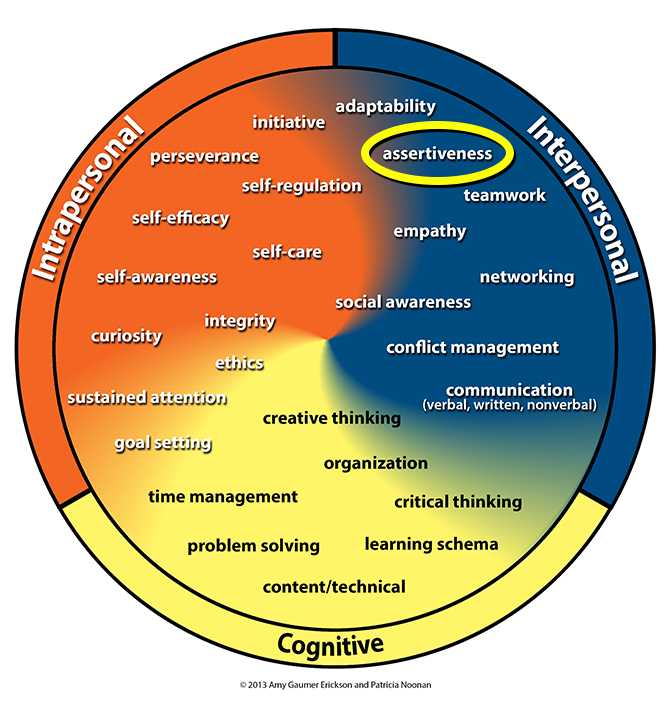Introduction
As you review this module, record your ideas, thoughts, and actions in the Educator Workbook. This workbook contains activities, reflective questions, instructional tools, and assessments that we will refer to throughout the module. After completion of the module, submit your Educator Workbook to earn 9 Continuing Education Units (CEUs).
Part 1: Defining Assertiveness
Part 2: Understanding Your Ability to Be Assertive
Part 3: Understanding Yourself
Part 4: Embedding Opportunities for Students to Practice Assertiveness
Part 5: The College and Career Competency Framework
Introduction
Do your students have difficulty expressing themselves, asking for help when they don’t understand, sharing opinions during group work, or standing up to their peers? Or do they react aggressively in certain situations, responding in demanding or hostile ways instead of respectfully expressing their thoughts or needs? Assertiveness instruction can help. Assertiveness instruction and practice supports students in learning to express themselves appropriately and empathize with others. The focus of this module is to provide instructional activities to use with your students to help them develop assertiveness. The activities in this module help students learn and practice key concepts for assertiveness applied to varying goals and classroom expectations.
Assertiveness is an interpersonal competency that is defined as “expressing your wants, needs, and thoughts while respecting others, even when it’s difficult” (Noonan & Gaumer Erickson, 2018, p. 105).

Research shows that improving high school students’ understanding of assertiveness through guided practice helps them to seek assistance and supports as well as future educational and career opportunities (Wolfe et al., 2012; Buell & Snyder, 1981; Lane et al., 2006). Teaching students to be assertive prepares them to advocate for themselves and their dreams, resist peer pressure, and work to resolve interpersonal conflicts (Paglia & Room, 1999; Wolfe et al., 2012).
Teachers who implemented assertiveness instructional activities have observed that students are able to express their wants, needs, and opinions in a self-assured and direct manner while respecting the rights of others. They also reported that their students are able to establish boundaries with those around them and adhere to those boundaries when they are tested in various situations.
Module Outcomes
This online learning module was developed to assist classroom teachers, special educators, career technical educators, and school counselors in teaching assertiveness to middle and high school students. After completing this module, you will be able to:
- Describe activities that support students in defining assertiveness, identify strengths and challenges related to assertiveness, and help students better understand their feelings and express them appropriately at any given time;
- Determine ways to have students practice assertiveness related to classroom activities;
- Access resources via https://www.cccframework.org/ to support your assertiveness instruction; and
- Explain the College and Career Competency Framework to a colleague, including why we need to support systematic social-emotional learning.
Additional Resources
- Teaching Assertiveness in Middle and High School Classrooms by Noonan & Gaumer Erickson (2017).
- The Skills That Matter: Teaching Interpersonal and Intrapersonal Competencies in Any Classroom by Noonan & Gaumer Erickson (2018).
